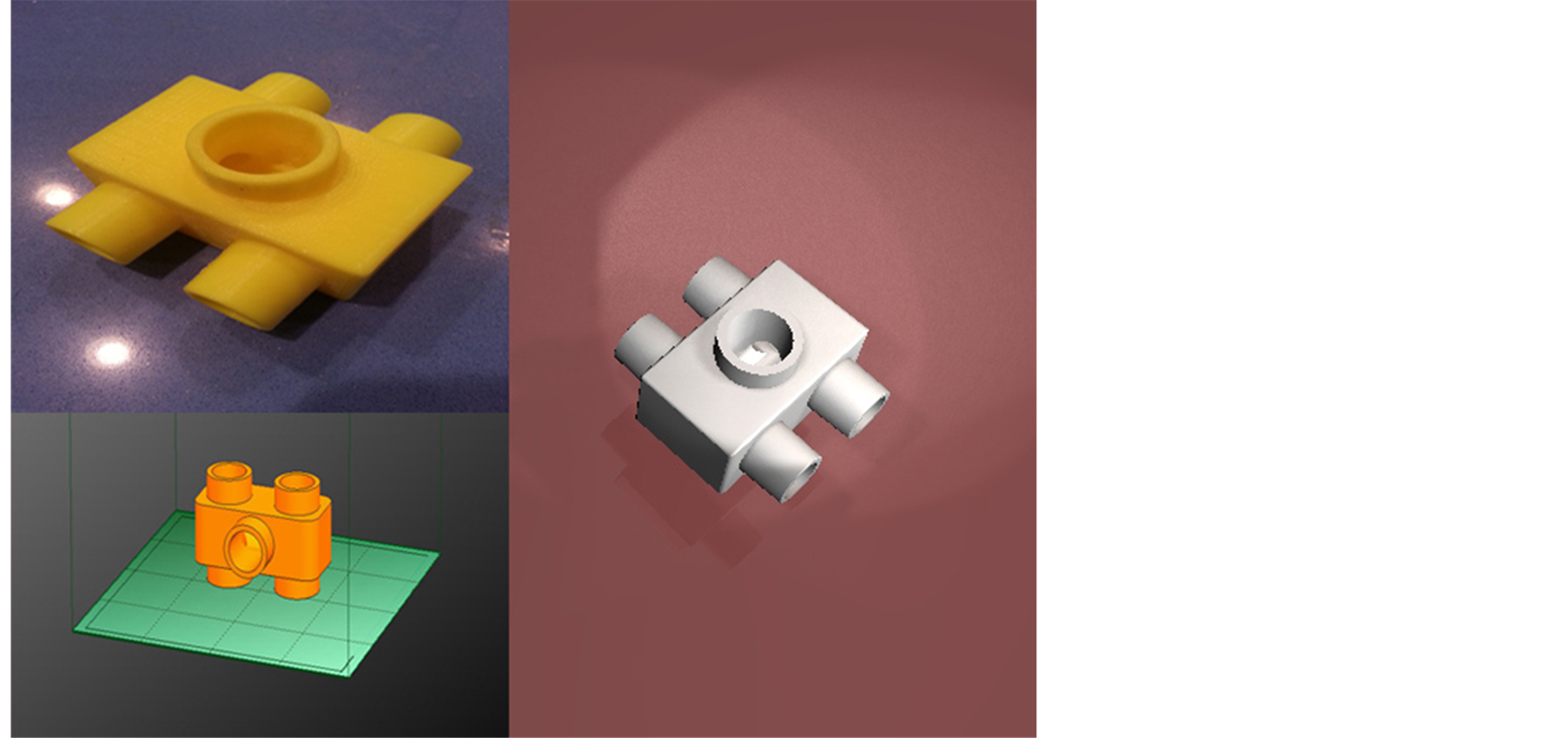Experimental 3D Printed 4-Port Ventilator Manifold for Potential Use in Disaster Surges ()
1. Introduction
It has been experimentally shown in both artificial lung and in an animal model that a single ventilator could, in the event of a disaster surge, be modified to ventilate four simulated adults for a limited time [1] [2] . In this paper we used a freely downloadable Computer Assisted Design (CAD) program called TrueSpace to create a Three Dimensional (3D) model of a four port Ventilator-Respirator Manifold [3] [4] .
The design process used simple objects within the program such as a cube and cylinders to either add to or subtract from each other to form the desired shape, size and configuration of a four port manifold. The ports were each given a 0.5 degree taper from the base to the end of the port. The ends of the designed ports were measured against both respirator mask tubing and the existing machine port dimensions. The resulting 3D model was then saved as a StereoLithography (STL) file format to be sent to a low cost 3D printer. The file that described the manifold was checked for surface integrity in second freely downloadable program called Netfabb [4] . Once the file had been checked for “water tightness” of the surfaces that describe the surface layers, it was sent to an Up!3D printer [5] . This printer melted a filament of Acrylonitrile butadiene styrene (ABS) plastic at 260 degrees Fahrenheit. The 3D printer was set to normal resolution, see Figure 1.
2. Result
The manifold was printed standing upright (see Figure 1. Lower Left) to minimize the amount of “support” material that would need to be removed after printing.
The model, as designed in TrueSpace CAD program is represented by 7232 facets using 3766 vertices. Its overall dimensions are 4.17 × 7.32 × 7.90 cm. It is printed on an Up!3D Afina model printer in ABS plastic at 200 micron (extruded width) from a 1.75 mm spool. Build parameters are set as follows:
Resolution-Normal; Heat platform-No; Z resolution = 0.2 mm; Base height = 2.0 mm; Surface thickness = 4 layers with 25% inner fill and Support set to 2 layers (Space 8 lines Area 15 mm2, Angle 45 degrees). The model is created in 405 layers and required 4:59 (hours: minutes) to complete while using 61.4 grams of ABS plastic at a cost of less than two dollars (based on average retail cost of 1 KG of ABS plastic filament).
The printed object showed uniform surface thickness, high rigidity and high tensile strength with accurate final measurements (as compared to the design measurements and CAD representation) without appreciable shrinkage during or after the cooling process. The “fit” test is seen in Figure 2. Both the manifold ventilator nozzle and individual ports fit snugly, without leakage (see Figure 2).
3. Discussion
3D printing has been described as a “transformative” technology in society [6] . We are recognizing the remarkable potential for this technology throughout healthcare [7] . The scope of 3D printing is broad and includes Bioprinting as well as medical devices [8] . We have already seen the early applications of 3D printed splints and casts and are quickly moving toward 3D printed real time automated wound management systems. This paper shows that it is possible to design a 3D print as many low cost four-port ventilator manifolds, as needed, in the

Figure 1. Top left shows 3D printed part in ABS plastic; Left bottom Up!3D software with part loaded and ready to print; Right panel shows CAD rendering of the Manifold available for modification as a DXF or STL formatted file.

Figure 2. “Fit” Test of 4-port manifold on Ventilator.
event of a disaster surge involving patients with pulmonary damage. The digital files for the manifold can be freely shared over the internet on websites such as “Thingiverse”, assuring availability in areas or services with limited healthcare resources [9] . The file can be modified in any one of dozen free CAD programs, thereby increasing the likelihood of shortened product development and increased use of derivative versions [10] .